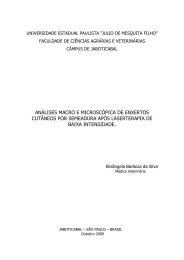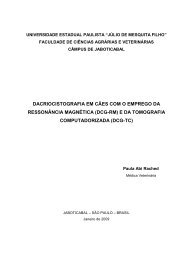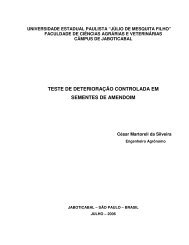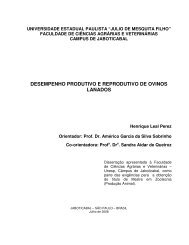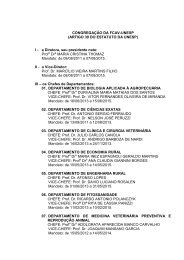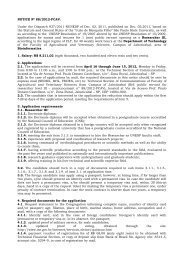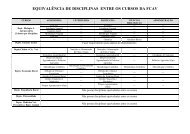visualizar - Unesp
visualizar - Unesp
visualizar - Unesp
Create successful ePaper yourself
Turn your PDF publications into a flip-book with our unique Google optimized e-Paper software.
Eficiência de Remoção<br />
DQO total (%)<br />
Eficiência de Remoção<br />
DQO dissolvida (%)<br />
Eficiência de Remoção<br />
DQO sólidos suspensos (%)<br />
100<br />
90<br />
80<br />
70<br />
60<br />
50<br />
40<br />
30<br />
20<br />
10<br />
0<br />
100<br />
90<br />
80<br />
70<br />
60<br />
50<br />
40<br />
30<br />
20<br />
10<br />
0<br />
100<br />
90<br />
80<br />
70<br />
60<br />
50<br />
40<br />
30<br />
20<br />
10<br />
0<br />
Observa-se que no afluente há predominância de matéria orgânica dissolvida,<br />
correspondendo na média a 81% da DQO total. Esta tendência permaneceu no efluente<br />
dos reatores UASB.<br />
Ensaio 1<br />
R2 R1 R1 + R2<br />
Ensaio 2 Ensaio 3 Ensaio 4<br />
3 6 9 11 13 17 21 27 29 33 35 43 47 51 57 62 69 74 78 80 88 92 96 100 110 115 125 132 138 143 149 156<br />
Período (Dias)<br />
FIGURA 10. Eficiência de remoção de DQO total, DQO dissolvida e DQO devido aos<br />
sólidos suspensos nos reatores UASB (R1 e R2) e no conjunto de<br />
reatores (R1+R2), nos ensaios 1, 2, 3 e 4.



